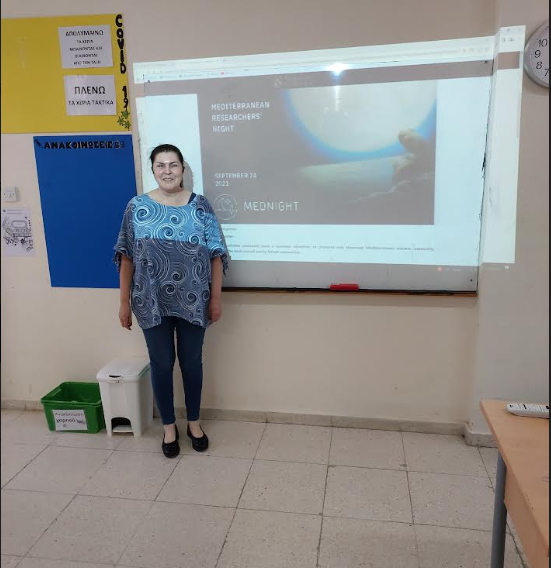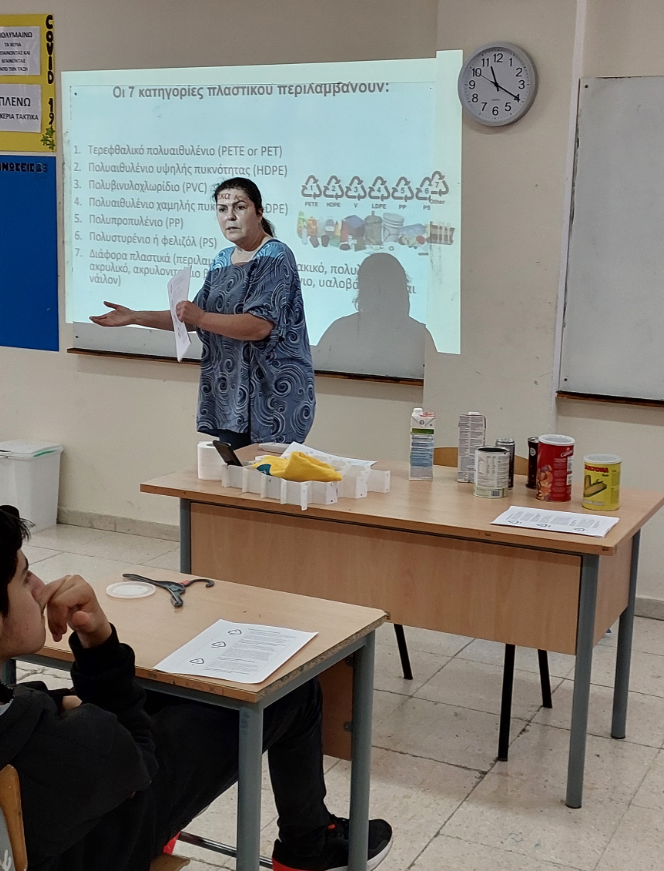Attendance: 19 students
Location: Kiti High School, Larnaca
The workshop, which was presented by Dr Iris Charalambidou, started with a presentation on plastics. The students learned about the widespread use of plastic products in our daily lives, their usefulness and the risks to human health and the environment, taking as an example the pollution of the oceans. They then learned to understand the numbers that appear on the containers of cleaning products, cosmetics and foodstuffs by investigating their labels and completing a worksheet exercise. The numbers define the type of plastic the container is made from, and the ease or difficulty of recycling it.
Dr Iris Charalambidou is a member of the Mediterranean Science Team 2021. She is a biologist working at the University of Nicosia, Cyprus. She has conducted a pioneering study that showed the flourishing flora and fauna of what is known as the Green Line in Cyprus




